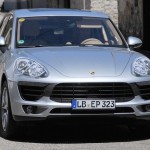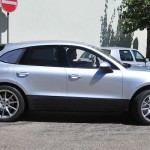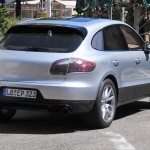
The long-awaited Porsche SUV named after the Malyasian word for tiger has been spied wearing very little camouflage ahead of its debut at the Los Angeles motor show in November and its arrival in New Zealand in June next year.
The mid-sized model has been photographed many times during its development but almost always disguised with modified bodywork from the bigger Cayenne SUV.
The Macan is based on fellow Volkswagen Group products the Audi Q5 and upcoming Q6 platform. It is said to be lower and shorter than the Q5, but 90mm wider for a road-hugging profile.
Bespoke suspension, damper and brake components will allow it to “combine all sports-car characteristics with the benefits of an SUV,” says Porsche marketing executive Bernhard Maier.
Inside, the four-seat cabin promises more luxury than the Q5. The centre console will be set higher to cocoon the driver, an environment rounded off by the Panamera-inspired dashboard design and switchgear.
As expected, the near-production model bears a strong resemblance to the Cayenne but with a more heavily raked rear windscreen, much like its RX Lexus rival.
The front also borrows from the Cayenne assembly. The bonnet lines are similar, although the Cayenne’s bonnet is more heavily creased; the Macan’s twin-lamp headlights are more prominent, and its centre grille is deeper and wider to accommodate a horizontal series of intakes.
The Macan is expected to introduce Porsche’s new turbocharged four-cylinder petrol engine that will eventually power the Boxster. It will be the carmaker’s first four-cylinder unit since the 3-litre 968 was phased out in 1995.
It will also get V6 options including a turbocharged six-cylinder engine capable of 280kW, as well as a diesel and plug-in hybrid.
- Porsche Macan



